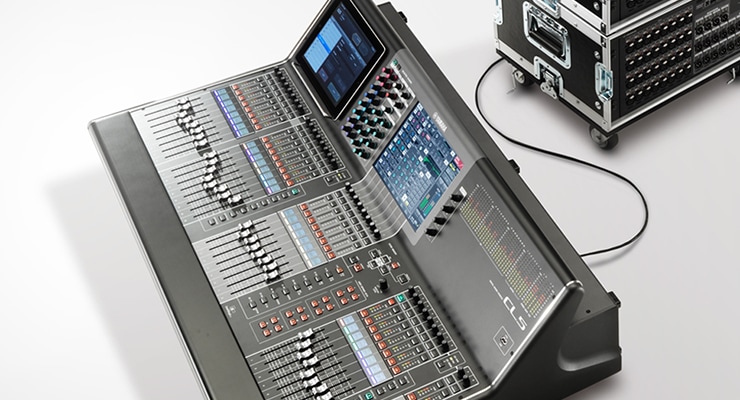Better Sound for Commercial Installations
Part 1: Sound Basics

05: Live Events
Application 3: Live Events (Sound Design)
At live events and concerts you'll often see one or more sound engineers operating mixing gear in the midst of the audience, and perhaps technicians busily making adjustments to equipment on stage. This is probably the first image that comes up when we think of "sound professionals." It can be a very complicated business, but here are some of the basics.
Sound Reinforcement

When music is the main feature of an event, the term "sound reinforcement" is often used instead of "PA system," even if the music is interspersed with speeches or other content. Since sound is the main feature of such events, the quality of the sound and way it is presented are of great importance. This function is sometimes called "sound design." Whereas "PA" implies making the sound louder so that more people can hear it clearly, "sound reinforcement" involves careful sound design so that the best possible, most musical sound is evenly distributed to the entire audience.
(Figure: Sound is a vital part of live events and shows. Careful, appropriate sound design is required.)
Designing a Sound System for Live Events
Sound reinforcement covers a lot of ground, from small cafés that hold live events to outdoor concerts with audiences numbering in the tens of thousands. What's more, the type of sound necessary for a rock concert might be quite different from sound that's appropriate for a world-music concert, for example. The sound system must be optimally matched to the scale of the event as well as the content. One thing that most live events have in common, regardless of scale, is the need for sound design that results in a clear, natural (flat) overall sound. If the sound is muddy, or if some frequencies are unnaturally louder or softer than others, the audience will end up fatigued and will not be able to enjoy the event. A major difference from background music applications is that achieving clear directionality is an important part of sound design. The audience should be able to clearly hear where the sound of each source is coming from. The positioning and tuning of the speaker system is critical to achieving clear, natural sound directionality. Speaker positioning will be discussed in more detail in "Speaker Layout and Sound Pressure Level," and speaker tuning will be discussed in "Tuning for Better Sound," both in Part 2.
In the last three sections we've looked at various applications for sound systems. We also mentioned that recent advances have made sound system operation easier and made it possible to automate some functions. The next section looks at the digital technology that has brought about some of these improvements.
Contents
The sound systems that broadcast the information you're hearing have been carefully designed and installed to suit the needs of each individual facility.
This series offers information aimed at achieving the best possible sound in commercial installations, from the basics to equipment selection and day-to-day operation.








